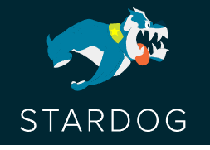
Product Name: Stardog
Company Name: Stardog Union, Inc.
URL: https://www.stardog.com
Entry Year: 2015
Market Share (or Graph DB Revenue):
Stardog is considered a key player in the graph database market, particularly in the enterprise knowledge graph segment. Specific revenue figures are not publicly disclosed, but Stardog has a significant market presence in industries like healthcare, finance, and government.
Number of Employees: Approximately 100-150 employees
Capital: Not publicly disclosed
Funding:
Stardog has raised approximately $32 million through multiple funding rounds, with its latest Series B round raising $9 million in 2019. Investors include notable firms like Tenfore Holdings and Grotech Ventures.
Major Users:
Stardog is used by major enterprises such as Bosch, NASA, Bayer, PwC, and the US Department of Defense. It is also popular in industries including pharmaceuticals, aerospace, finance, and manufacturing.
Key Application Areas:
Stardog is primarily applied in building enterprise knowledge graphs, data integration, supply chain management, digital transformation, customer 360 views, and compliance monitoring.
Product Overview:
Stardog is an enterprise knowledge graph platform that helps organizations connect, query, and manage their data as a unified whole. It uses an RDF-based graph database model combined with a powerful reasoning engine. Stardog excels at data unification and integration, allowing organizations to create a single view of data spread across multiple systems.
Data Compatibility:
Stardog supports various data formats such as CSV, JSON, XML, and integrates well with relational databases (e.g., MySQL, PostgreSQL), NoSQL databases, and data lakes. It also supports the W3C RDF and OWL standards, enabling seamless interoperability with semantic web technologies.
Knowledge Graph Implementation:
Stardog is specifically built for enterprise knowledge graphs. It uses RDF (Resource Description Framework) to represent and link data, combined with OWL (Web Ontology Language) for reasoning over the data. Its knowledge graph capabilities are designed to integrate disparate data sources into a unified, semantically rich dataset.
Query Method:
Stardog uses SPARQL, the W3C-recommended query language for RDF data. SPARQL enables powerful querying and reasoning over Stardog’s knowledge graphs, making it a highly flexible system for exploring relationships in data.
Natural Language Queries:
While Stardog does not natively support natural language queries, it can be integrated with NLP tools to interpret natural language inputs and convert them into SPARQL queries. This enables domain-specific question-answering systems.
Native Machine Learning:
Stardog includes features that allow for graph-based machine learning. Through its knowledge graph, Stardog can generate features for machine learning models, especially in cases where understanding the relationships in the data is key. Stardog’s integration with machine learning libraries enables graph-based predictions and classifications.
Support for Traditional Machine Learning:
Stardog provides integration with traditional machine learning models by exporting enriched data from its knowledge graph into external ML frameworks like TensorFlow, scikit-learn, and PyTorch. The reasoning and inference capabilities in Stardog make it valuable for feature generation in these traditional ML tasks.
Support for LLMs:
Stardog is exploring the integration of large language models (LLMs) to enhance its ability to handle unstructured data and text analysis. These capabilities can help Stardog enrich its knowledge graphs by automatically generating semantic relationships from text data and other unstructured information.
Support for RAG (Retrieval-Augmented Generation):
Stardog’s knowledge graph can be leveraged for RAG models by serving as a structured retrieval source for text generation tasks. With its ability to query and reason over complex datasets, Stardog can augment LLMs with contextual data, improving the quality of responses in RAG use cases.
Other Notable Features:
Virtual Graphs: Stardog provides virtual graphs, allowing for querying data across multiple sources without moving it, enabling real-time data integration.
Reasoning engine: Stardog includes an advanced reasoning engine that allows users to infer new facts from existing data based on ontology definitions and logical rules.
Stardog Studio: A visual tool for querying, managing, and exploring knowledge graphs, designed for both technical and non-technical users.
Security: Stardog offers robust security features, including role-based access control, integration with enterprise security frameworks, and encryption.







